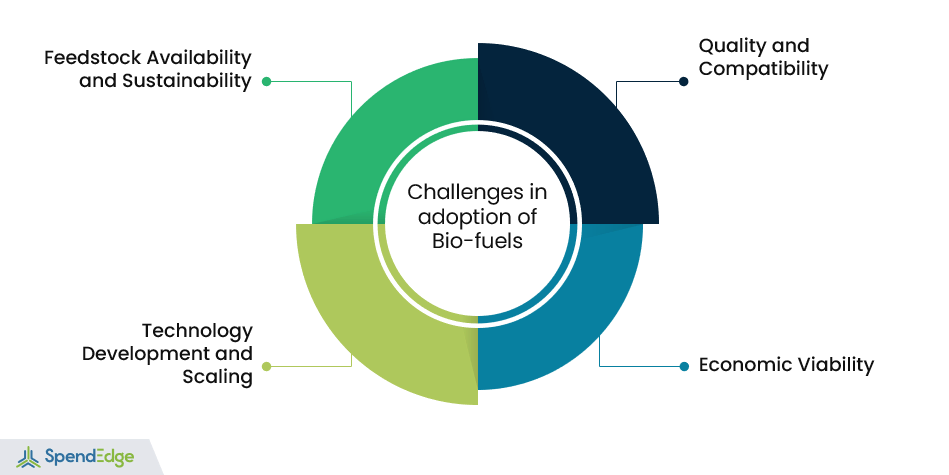Table of content
- Environmental Impact of Synthetic Oils
- Bio-oil production
- End-use Applications
- Challenges and Opportunities
- Conclusion
Increasing concerns about climate change, energy security, and finite fossil fuel resources is a growing concern and it imperative for the industrial world to transition from traditional synthetic oils, derived from petroleum to more sustainable alternatives. Among these alternatives, bio-oils have gained significant attention due to their potential to mitigate environmental impacts, reduce greenhouse gas emissions, and contribute to a more sustainable energy landscape.
Environmental Impact of Synthetic Oils
Traditional synthetic oils, predominantly derived from fossil fuels, and while they have provided energy, lubrication, and countless other applications, their production and consumption have come at a steep environmental cost. The extraction, refining, and combustion of petroleum-based oils contribute significantly to greenhouse gas emissions, air and water pollution, and habitat destruction. This environmental toll has led to the search for greener alternatives.
Bio oils, often sourced from renewable biomass feedstocks such as plants, algae, or waste materials, offer a compelling alternative to synthetic oils. They are considered more sustainable primarily for three reasons:

- Carbon Neutrality: Biomass used for bio-oil production absorbs carbon dioxide (CO2) from the atmosphere during its growth, effectively offsetting the CO2 released when the bio-oil is burned or used. This carbon neutrality can help mitigate the net increase in atmospheric CO2 levels, a key driver of global warming.
- Reduced Greenhouse Gas Emissions: Bio oils generally emit fewer greenhouse gases during their production and use compared to their synthetic counterparts. Their production processes are typically less energy-intensive, and the carbon cycle associated with biomass is more closed-loop and sustainable.
- Renewable Resource: Unlike finite fossil fuels, biomass feedstocks for bio-oils are renewable, making them a long-term solution for sustainable energy and lubrication needs. This reduces dependence on volatile fossil fuel markets and enhances energy security.
Bio-oil production
Transitioning from synthetic oils to bio-oils requires the development and deployment of various technologies. These technologies can be broadly categorized into biomass feedstock sourcing, conversion processes, and end-product applications. Choice of biomass feedstock is a crucial factor in bio-oil production. Different sources offer unique advantages and challenges. Common biomass feedstocks for bio-oil production include crop residues such as straw, corn stover, and sugarcane bagasse can be used as feedstocks. They are readily available and can help utilize agricultural waste. Dedicated energy crops like switchgrass, miscanthus, and algae are grown specifically for bio-oil production. These crops often have high energy yields per unit of land. Logging and wood-processing residues can also serve as biomass feedstocks. Using these materials helps manage forest waste and can contribute to sustainable forestry practices. Finally, organic components of municipal solid waste can be processed into bio-oils, offering a potential solution for waste management and energy production.
End-use Applications
Bio oils can be used in a wide range of applications, depending on their properties and quality. Some common applications include transportation fuels. Bio-oils can be processed into biofuels, such as biodiesel and renewable diesel, which can replace or blend with conventional fossil fuels in vehicles, aircraft, and ships. Bio oils can serve as base oils for lubricants, offering biodegradability and reduced environmental impact compared to petroleum-based lubricants. Bio oils can be further processed into a variety of chemicals, plastics, and materials used in industry and manufacturing. Bio oils can be burned directly for heat and power generation, providing a renewable energy source for residential, commercial, and industrial applications.
Challenges and Opportunities
Transitioning from synthetic oils to bio-oils presents considerable challenges that must be carefully considered:

1. Feedstock Availability and Sustainability
One of the key challenges is ensuring a consistent and sustainable supply of biomass feedstocks. Overreliance on specific feedstocks or unsustainable agricultural practices can lead to negative environmental and social impacts, such as deforestation or competition with food crops.
Opportunity: Developing sustainable biomass supply chains and optimizing feedstock selection can mitigate these challenges. Research into advanced feedstock production techniques, such as precision agriculture and algae cultivation, can enhance biomass availability.
2. Technology Development and Scaling
Scaling up bio-oil production technologies to meet global demand is a complex task. Developing efficient and cost-effective conversion processes while ensuring minimal environmental impact is a significant challenge.
Opportunity: Government incentives, private investment, and research collaboration can accelerate technology development and scaling. Continued innovation in reactor design, catalysts, and process optimization can make bio-oil production economically viable.
3. Quality and Compatibility
Bio oils must meet stringent quality standards to be used in various applications, including transportation fuels. Achieving consistent quality and ensuring compatibility with existing infrastructure and engines can be challenging.
Opportunity: Investing in research and development to improve the quality and compatibility of bio-oils with existing systems can unlock new markets and applications. Certification and standardization efforts can also facilitate market acceptance.
4. Economic Viability
The cost competitiveness of bio-oils compared to synthetic oils remains a significant hurdle. Reducing production costs and ensuring a competitive market price for bio-oils is essential for their widespread adoption.
Opportunity: Policy support, subsidies, and carbon pricing mechanisms can level the playing field and incentivize the production and consumption of bio-oils. Continued advancements in technology can also drive down production costs.
5. Path forward
The transition from synthetic fuels to biofuels is a promising step toward a more sustainable energy future. Biofuels offer a multifaceted solution to some of the most pressing global challenges. They have the potential to mitigate climate change, improve air quality, create jobs, enhance energy security, and promote technological innovation.
However, it’s essential to recognize that biofuels are not a one-size-fits-all solution. The sustainability of biofuels depends on responsible practices in feedstock cultivation and processing. Furthermore, research and development efforts must continue to improve the efficiency of biofuel production and minimize potential negative environmental impacts.

Conclusion
Biofuels represent a sustainable alternative to synthetic fuels, offering a path forward to a greener, more secure, and economically vibrant energy sector. By investing in biofuel technologies, implementing supportive policies, and promoting responsible production practices, we can pave the way for a more sustainable and resilient global energy system. Embracing biofuels is not just a choice; it is a necessity in our pursuit of a more sustainable and prosperous future.




